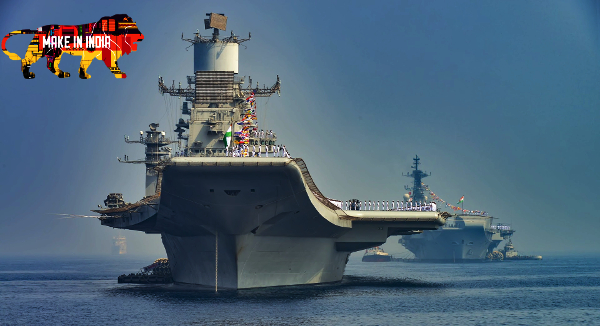India’s first Indigenous Aircraft Carrier (IA C) – INS Vikrant might begin its sea trials in Karwar waters, which is scheduled to begin in December. India’s first indigenously built aircraft carrier is finally entering into the pre-induction stage. It will be entering sea trial in December, which according to sources, will be in the West Coast in Karwar. “There is still time for that. It could be possible that it might happen in Karwar or Visakhapatnam. It has to be done only these two places,” an official source said, adding that these are the two places which have such facilities.
The IA C has been equipped with required systems and tools and the sea trial run was supposed to begin earlier this year. However, the same was postponed following the Covid-19 pandemic, sources said. Built at Cochin Shipyard Limited (CSL) in Kerala, the INS Vikrant – with a displacement of 40,000 tonne – is 262-metre long and has a 62-metre beam. Though the aircraft can carry up to 40 fighter aircrafts, the Navy, sources said, is yet to decide on the aircrafts it would carry.
The project was planned in January 1997. The project, earlier known as Air Defence Ship (ADS), was planned for 20,000 tonne displacement. However, later it was enhanced to 37,500 so that the vessel would carry fighter jets like MiG 29K and the designation was changed to Indigenous Aircraft Carrier (IA C) from the earlier Air Defence Ship.
The project was delayed due to several reasons and finally it was entrusted to CSL considering its modern infrastructure facilities. The ship was designed by the Directorate of Naval Design, which was its first assignment to design an aircraft carrier. Several firms across the country have chipped in for development of this indigenous aircraft carrier. The maximum speed of the ship would be 28 knots with a range of 7,500 nautical miles. The ship, when commissioned, will have 160 officers and 1,400 sailors on board.
Source: The New Indian Express
You may also like
-
IAF Aircraft Set Course For Exercise Eastern Bridge VII At Oman
-
IAF Set To Host The Indian Defence Aviation Exposition-II At Jodhpur
-
Defence Secretary to co-chair 5th India-Philippines Joint Defence Cooperation Committee meeting in Manila
-
Simultaneous Launch Of ‘malpe And Mulki’, Fourth And Fifth Ships Of Asw Swc (Csl) Project
-
Aatmanirbharta in Defence: MoD signs Contract with HAL for 240 AL-31FP Aero Engines for Su-30MKI Aircraft
